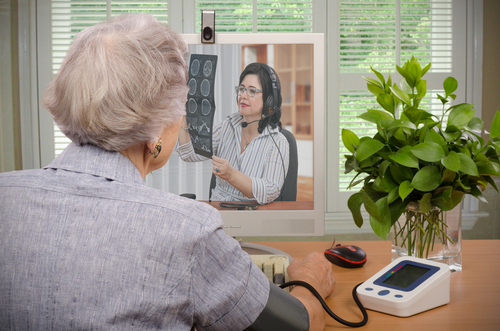A recent article in the Wall Street Journal discusses how telemedicine has begun to transform the healthcare industry. As a result of increased Internet speed, the use of smartphones and changing insurance standards, increasingly more health providers are turning to electronic communications to consult with and treat patients. At the same time, patients are using new devices to relay their blood pressure, heart rate and other vital signs to their doctors so they can manage chronic conditions at home. In fact, the WSJ article cites that more than 15 million Americans received some kind of medical care remotely last year, according to the American Telemedicine Association, a trade group, which expects those numbers to grow by 30% this year.
Among the telemedicine applications being used is in long-term care, including for assisted living facilities. Hospital readmissions constitute one of the most significant costs for long-term care facilities. Telemedicine can help ease the burden by removing the need for patients to return to the hospital in many cases. In fact, according to Long Term Living magazine, about one-quarter of the 40% of senior living residents who are transferred to a hospital could avoid a hospital stay with telemedicine technology. Similarly, those who are discharged back to their living facilities can receive the same medical consultations via video conference and other telemedicine technology as they could in-house, saving the facility and the hospital money in transportation costs.
Additionally, senior living residents often have a higher need for regular health care than other individuals because of the prevalence of chronic health conditions among an aged population. However, in many instances seniors may be homebound due to illness or injury, or transportation to a care facility may not be available. Long-term care clinics and residential facilities that partner with telemedicine technology companies can ensure that these seniors don’t compromise their access to healthcare. In fact, consultations may be even easier thanks to the usability of the telemedicine technology.
Employees, including clinicians, of long-term facilities, also benefit from telemedicine. The reduction in nursing home admissions and re-hospitalizations allows staffers at these facilities to see more patients, leading to an improvement in care quality and less use of resources due to a reduced level of in-person visits.
Following are a few examples of how assisted living facilities are using telemedicine:
- Measuring key patient indicators like weight or blood pressure without the resident having to leave their home
- Providing efficient, remote collaboration with team members, specialists or key providers from nearby hospitals or practices
- Decreasing ER and OR visits due to surgeons and other providers evaluating remotely whether a procedure is required
- Providing “touch points” on a single case, since geriatric issues often involve more than one specialty
Caitlin Morgan specializes in insuring senior living facilities, including assisted living facilities, nursing homes, home health care and independent living facilities. We offer comprehensive senior living insurance solutions that can be tailored to the needs of the insured. For more information about our programs and products, contact us at 877.226.1027


